In the vibrant world of gardening, the care of potted plants is an art that can transform any space into a lush haven of greenery. Whether you’re just starting your gardening journey or are a seasoned plant enthusiast, understanding the intricacies of watering these container-bound beauties is crucial to their health and vitality. Paying close attention to your watering schedule can mean the difference between thriving plants and those that struggle to survive. A well-timed drink for your potted companions helps them flourish, making your home or garden a testament to nature’s beauty.
Potted plants, unlike their garden bed counterparts, rely entirely on us for their hydration needs, which makes getting the watering right a responsibility and a joy. Through this article, you’ll uncover the secrets to crafting a watering schedule that meets the unique needs of your plants, fostering their growth and ensuring their leaves remain vibrant and lush. We will explore how factors such as plant type, pot size, and even the season influence how often and how much you should water. By the end, you’ll feel empowered to nurture your plants with confidence, knowing you’ve given them the best chance to thrive.
Join us as we delve into the art and science of watering potted plants, a skill that is as rewarding as it is essential. You’ll learn to read the subtle signs your plants give when they thirst, and how to adjust your care to keep them happy and healthy. Together, we’ll demystify the process, turning what might seem an overwhelming task into a manageable and enjoyable routine. Whether your pots line a sunny windowsill or adorn a shaded patio, this guide will equip you with the knowledge to keep them at their best.
Understanding Plant Water Needs
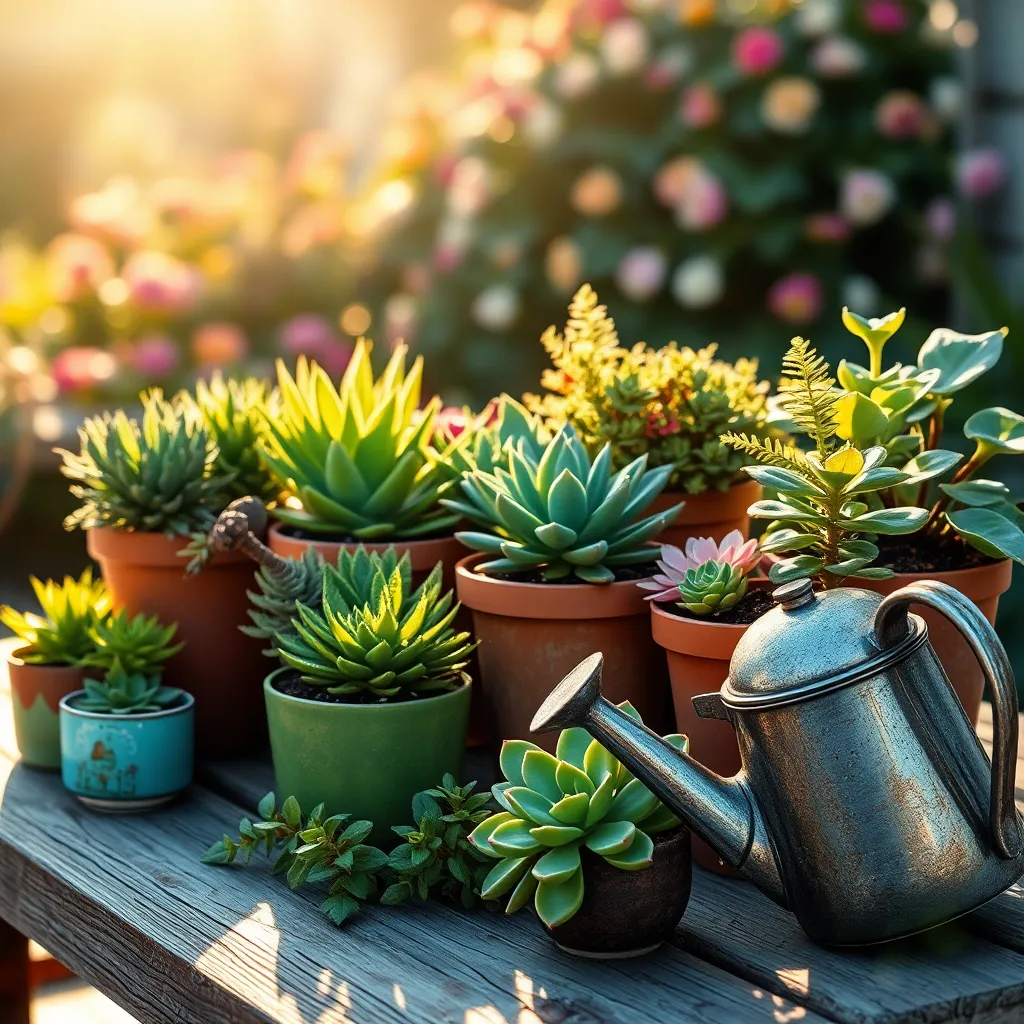
Understanding the water needs of your potted plants is crucial for their health and growth. Each plant has unique requirements depending on its species, size, and the environment it inhabits.
To ensure optimal growth, it’s essential to consider the type of soil you’re using in your pots. Well-draining soil is generally recommended for most potted plants because it prevents waterlogging and root rot.
It’s also important to evaluate the climate and weather conditions in your area. Warmer temperatures and more sunlight can increase a plant’s water needs, while cooler, cloudy conditions might reduce them.
Observing your plants regularly is key to understanding their water needs. Check the soil moisture by sticking your finger about an inch deep into the soil; if it feels dry, it’s time to water.
For advanced care, consider using a moisture meter to accurately assess the soil’s hydration levels. This tool can help you make more precise watering decisions, particularly for plants with specific moisture needs.
Factors Influencing Water Frequency
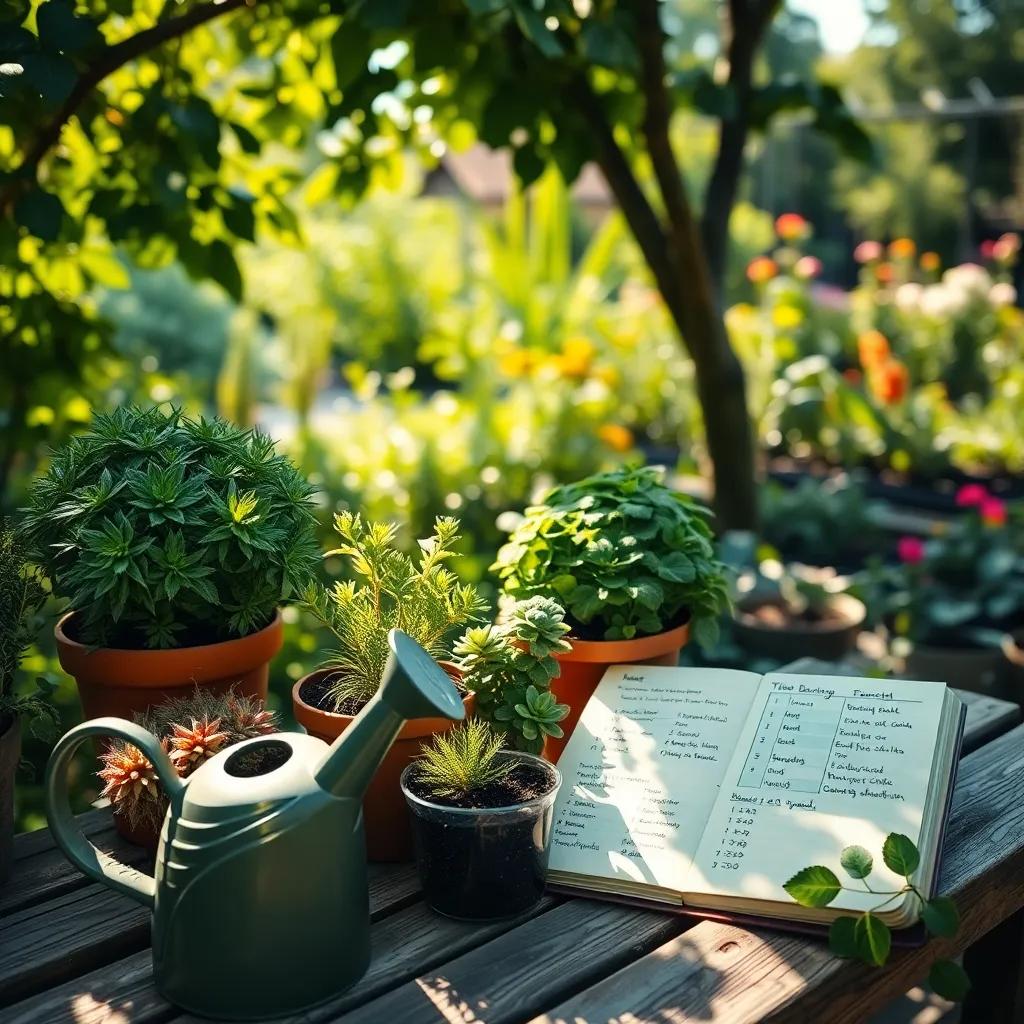
Watering frequency is influenced by several factors, with pot size being one of the most significant. Larger pots hold more soil, which can retain moisture longer, thereby reducing the need for frequent watering compared to smaller pots.
The type of plant you are growing also plays a crucial role in determining how often to water. Some plants, like succulents, have adapted to arid environments and require less frequent watering, while others, like ferns, thrive in consistently moist conditions.
Environmental conditions such as temperature and humidity can greatly impact watering needs. During hot and dry periods, plants will lose moisture more quickly through evaporation and transpiration, necessitating more frequent watering.
Beyond environmental factors, the type of soil used in the pot is vital for maintaining proper moisture levels. Well-draining soil mixes are essential for preventing overwatering, especially for plants that are prone to root rot, such as orchids.
Gardeners should also take into account the stage of growth of their plants. Young plants or those in active growth phases usually need more water compared to mature plants that have established root systems.
Creating a Consistent Watering Routine
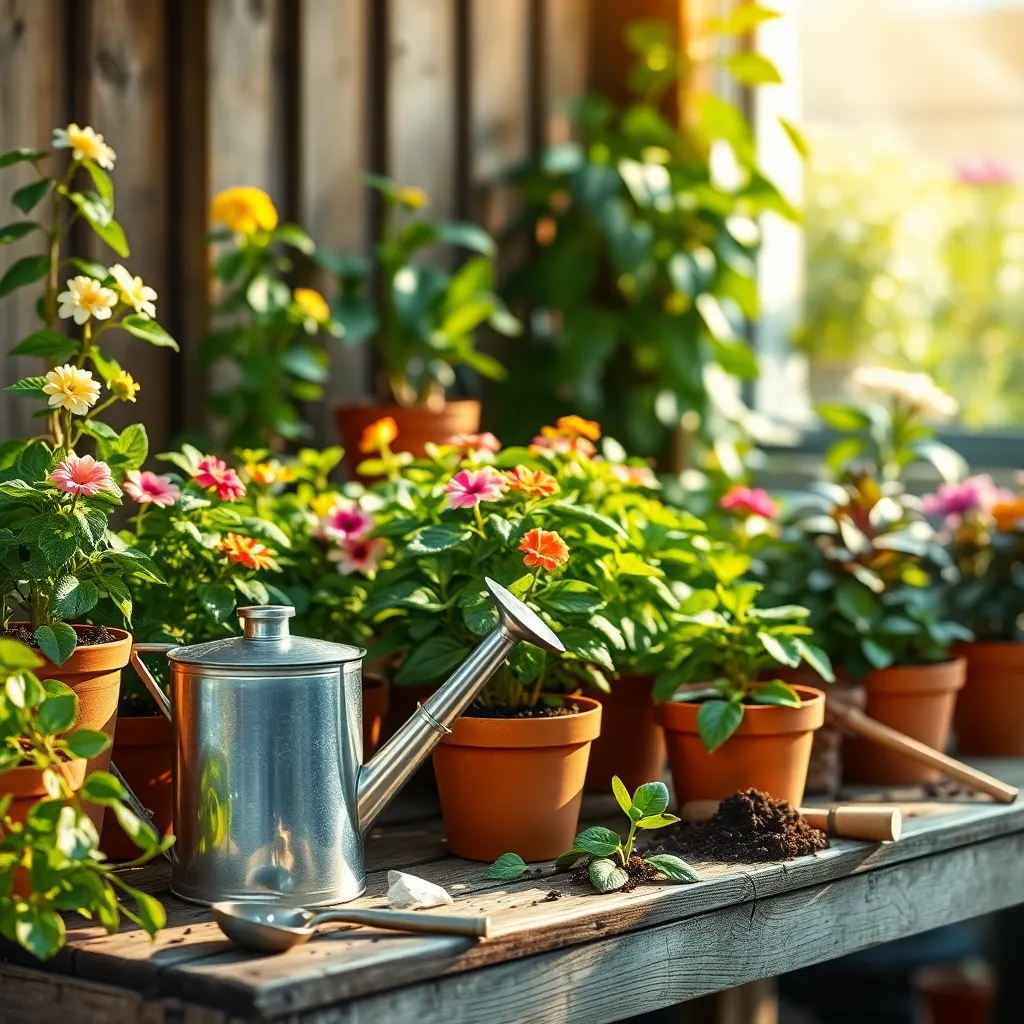
Establishing a consistent watering routine for your potted plants is essential for their health and growth. Start by observing your plants closely to understand their unique needs, as different species and pot sizes will require different watering frequencies.
One practical tip is to check the moisture level of the soil regularly. Insert your finger about an inch into the soil; if it feels dry, it’s time to water. If you’re caring for a variety of plants, consider grouping those with similar watering needs together to streamline your routine.
Using the right type of soil can also impact how often you need to water. A well-draining potting mix, often containing components like perlite or sand, helps prevent overwatering by allowing excess water to flow out. Make sure your pots have drainage holes to avoid waterlogged roots, which can lead to root rot.
Advanced gardeners might consider using a moisture meter for more precise watering. These tools can give you an accurate reading of your soil’s moisture content, ensuring you’re neither over- nor under-watering your plants. Additionally, try watering early in the morning to reduce evaporation and give your plants a fresh start to the day.
Signs of Overwatering or Underwatering
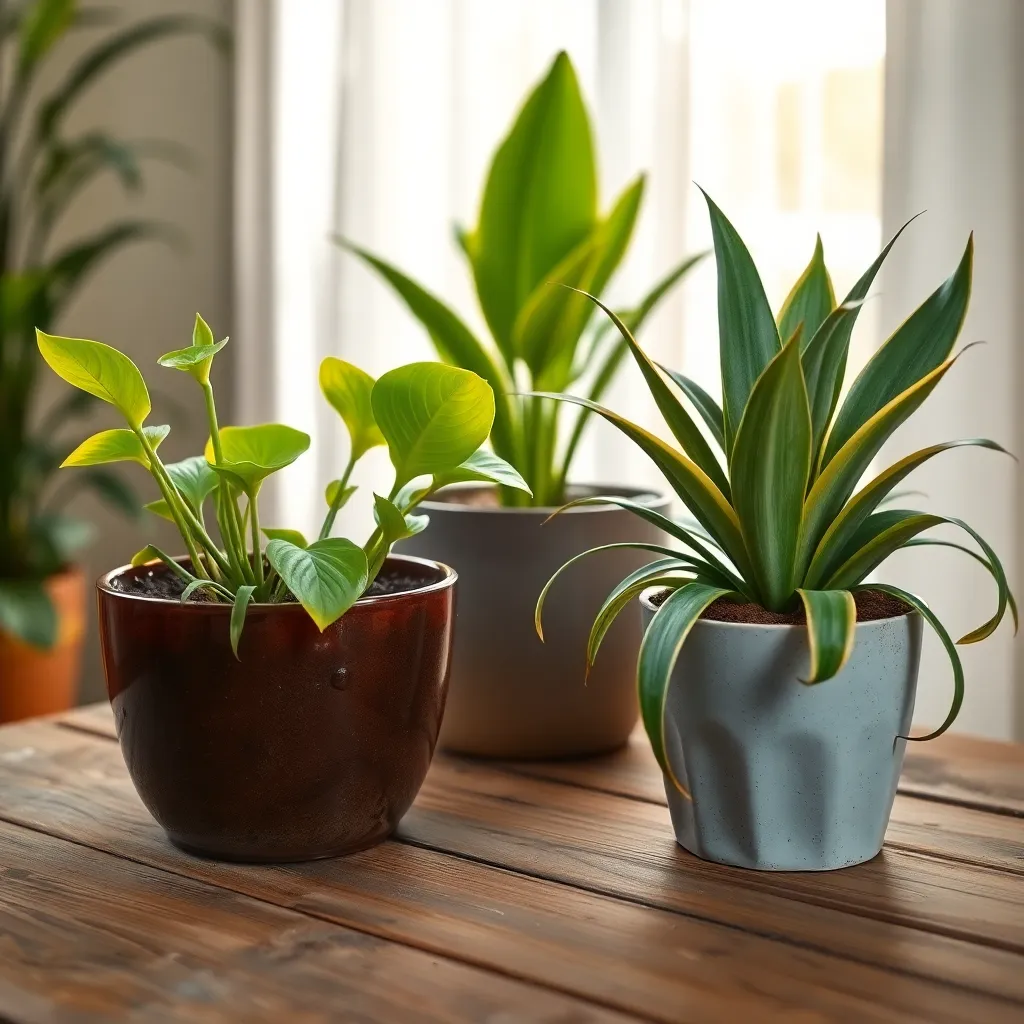
Recognizing the signs of overwatering or underwatering is crucial for maintaining healthy potted plants. Overwatered plants often exhibit yellowing leaves, which may also feel soft or mushy to the touch. In contrast, underwatered plants usually have dry, brown leaf edges and may appear wilted or droopy. Observing these symptoms early can help you adjust your watering practices to better suit your plants’ needs.
To determine whether your plant is overwatered, check the soil moisture level by inserting your finger about an inch deep into the soil. If the soil feels wet or soggy, it’s best to allow the plant to dry out before watering again. On the other hand, if the soil feels dry at that depth, it’s time to water your plant. This simple method helps you monitor soil moisture and prevent both extremes of watering.
Improving drainage can also prevent overwatering issues. Ensure your pots have adequate drainage holes to allow excess water to escape. Additionally, using a well-draining potting mix, such as one containing perlite or sand, can significantly reduce the risk of waterlogging. These small adjustments can enhance your plant’s environment and promote healthier growth.
For those looking to refine their skills, consider implementing a moisture meter to accurately gauge soil moisture levels. This tool can be especially useful for larger pots or for plants with less obvious signs of distress. Combining visual checks with a moisture meter provides a comprehensive approach to maintaining optimal watering conditions. By keeping a close eye on your plants and adjusting as necessary, you can ensure they thrive in their potted homes.
Seasonal Adjustments for Watering
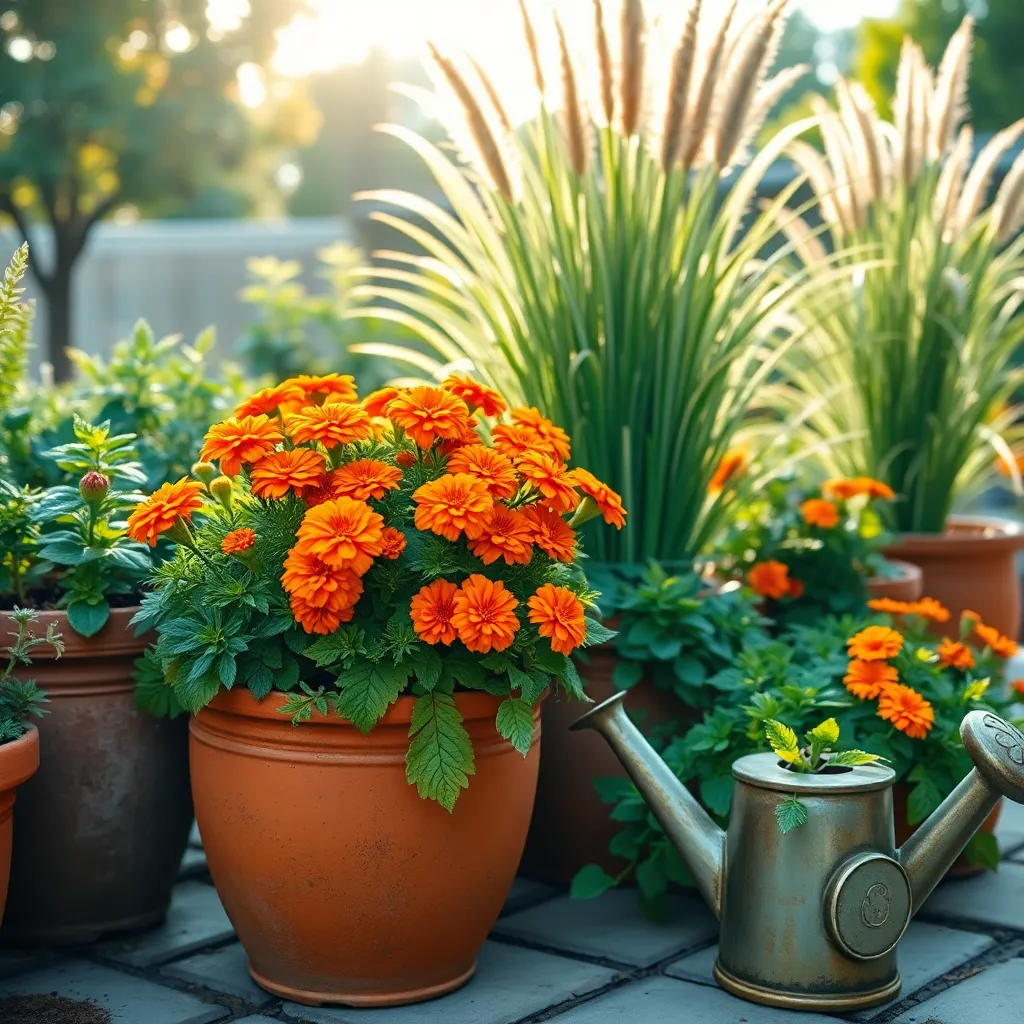
As the seasons change, so should your watering habits for potted plants. In spring and summer, when days are longer and temperatures rise, plants generally need more water to stay hydrated and thrive.
During these warmer months, consider watering your potted plants early in the morning. This helps to minimize evaporation and allows the plants to absorb water before the midday heat.
In contrast, fall and winter bring cooler temperatures and shorter days, requiring less frequent watering. It’s crucial to check the soil moisture more rigorously during these seasons, as overwatering can lead to root rot.
One advanced method to monitor watering needs is to use a moisture meter, which provides accurate readings of the soil’s water content. For beginners, simply sticking your finger about an inch into the soil can indicate if it’s time to water; if it’s dry at that depth, water is needed.
Adjusting the watering schedule also depends on the type of potting mix used. For example, soil with high drainage capabilities will need more frequent watering, whereas dense, moisture-retentive mixes require less.
- Consider using a potting mix with added perlite or sand for increased drainage in wetter climates.
- In drier regions, mix in organic matter like compost to help retain moisture.
Remember, each plant species has unique needs; succulents and cacti, for instance, require much less water than tropical plants. Regularly observing and adapting to these changes in your plants’ environment is key to maintaining healthy, thriving potted plants year-round.
Conclusion: Growing Success with These Plants
In nurturing both plants and relationships, consistency, understanding, communication, adaptability, and patience are essential. We explored how setting a consistent watering schedule parallels the importance of routine in relationships, ensuring they thrive and flourish. Understanding each plant’s unique needs mirrors the necessity of recognizing your partner’s distinct preferences and desires. Effective communication, much like understanding when a plant needs more or less water, is vital for a healthy relationship. Adaptability allows you to adjust to changing circumstances, ensuring both your plants and partnerships continue to grow. Lastly, patience is the cornerstone, as growth in both domains takes time and care.
As an actionable step, consider dedicating a moment today to assess the ‘watering schedule’ of your relationship. Are there areas that need more attention? Initiate a conversation with your partner about any adjustments needed.
Bookmark this article as your quick guide to nurturing both your botanical and personal relationships. With these strategies, you’re well-equipped to cultivate a vibrant relationship that stands the test of time. Remember, the seeds of effort you plant today will blossom into lasting success tomorrow. Keep this guide close as you continue to grow and nurture your relationships.

